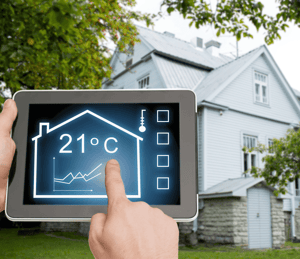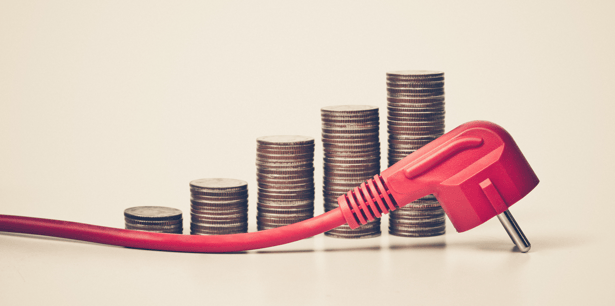When it comes time to equip your new home with appliances, it's important to remember technology has made a lot of progress in recent years.
Thanks to innovations in efficiency, insulation, and dependability, today's appliances are more energy-efficient than ever, which can translate to substantial savings both in terms of reduced utility bills as well as replacement costs.
Energy Use
According to Natural Resources Canada, the appliances in the average Canadian household consume up to 12% of the total energy use in the home.
Here's the breakdown for residential energy use in Canada in 2013:
- Home heating - 63%
- Water heating - 19%
- Appliances - 12%
- Lighting - 4%
- Home cooling - 1%
By upgrading to latest-generation appliances and home systems, every Canadian can recoup substantial savings in reduced utility bills.
 The ENERGY STAR Label
The ENERGY STAR Label
The easiest way to choose an energy-efficient appliance is to look for the ENERGY STAR certification. You can find a complete list of these on the ENERGY STAR website] (be sure to choose "Canada" as your home market.)
Heating
Living in Canada means there comes a time when you need to winterize your home. As a whopping 63% of residential energy use goes towards heating the home, choosing energy-efficient systems and appliances is essential to save money. This includes furnaces, heat pumps, gas fireplaces, and electrical heaters.
- Furnaces - Furnaces use natural gas to heat air forced past a flame. ENERGY STAR-certified furnaces use 6% less gas than conventional models. Advances include high-efficiency blower motors that can change speeds to provide uniform heating instead of needing to cycle on and off to do the job.
- Heat Pumps - Heat pumps work by leveraging the difference between the indoor temperature and outdoor temperature in order to heat the home. Although less common in Canada than the United States, ENERGY STAR-certified heat pumps are 5% more efficient than standard models.
- Gas Fireplaces - Increasingly common in Canada, these systems are cleaner, easier to use, and far better at heating your home than an old-fashioned wood-burning fireplace. That being said, it's important to remember that a gas fireplace is for heating individual rooms and not the entire house. Advances include electronic ignitions instead of continuously-burning pilot lights.
- Electric Heaters - Often in the form of space heaters, electric heaters can be either used as the primary source of indoor heat or in conjunction with other systems. Currently, there are no ENERGY STAR-certified electric heaters available.
Cooling
Although summers may feel too short, high humidity and sunny days mean most Canadians rely on cooling appliances and systems, including central air systems and individual room air conditioners. There are also ventilation methods to keep feeling cool such as ceiling fans and standard room fans.
- Central Air Systems - ENERGY STAR-certified central air systems use 8% less energy than standard models. Air conditioning systems are rated on their Seasonal Energy Efficiency Ratio (SEER) and Energy Efficiency Ratio (EER), with higher numbers meaning improved efficiency.
- Room Air Conditioners - Available in many sizes and output capacities, ENERGY STAR-certified air conditioners use 9% less energy than standard models. Advances include Wi-Fi connectivity so they can be controlled remotely, and improvements in insulation.
- Fans - One of the smartest ways to save money on home cooling is to use a ceiling fan. ENERGY STAR-certified ceiling fans use 60% less energy than standard models. Advances include better blade and motor designs. A great way to reduce energy use is to set the thermostat at two degrees above your target temperature and combine this with ceiling fans to better distribute the cool air. Doing this can reduce air conditioning costs by 14%!
 Water Use
Water Use
Water is incredibly important in your home. It's usually quite affordable to pay for standard water uses like drinking and cooking, but it's the heating of water for activities like washing dishes, washing clothes, and bathing that cause the bills to mount up. The average Canadian household uses 75 litres of hot water every single day. Indeed, 19% of the energy used in the average Canadian home goes towards heating water.
There are some really great ways to save money on your water heating energy usage, including standard hot water heaters and the new tankless water heating systems.
- Storage tank water heaters - Usually gas-fired, water tanks are the most common form of water heating in Canadian homes. ENERGY STAR-certified units use 14% less energy than standard models. Improvements include electronic ignition, condensing heat exchangers, more efficient flue baffle/damper controls, heat traps, and better insulating materials.
- Tankless water heating systems - Instead of pre-heating a large tank of water, tankless systems heat water on the fly. Tankless systems use either a gas burner or electric element to heat water as it's needed. ENERGY STAR-certified units are 30% more energy efficient than standard storage tank type water heating systems.
By investing in ENERGY STAR-certified appliances and home systems, you can enjoy substantial savings on your utility bills without any sacrifice in home comfort. Combined with new home building materials that have more efficient and "green" standards, energy-efficient appliances are a great way to both, save money, as well as help minimize your impact on the environment.
When you choose a great Edmonton home builder, they'll be happy to talk to you about your options when it comes to installing your new home appliances.




